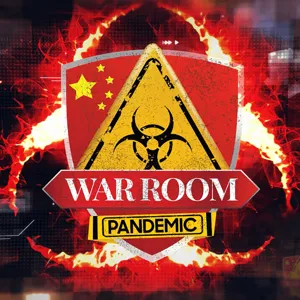
Sign up to save your podcasts
Or




“Currently, there is a surplus of fentanyl pills in America. The surplus, I believe, is driving increased addiction rates, because now fentanyl pill prices are going down. Drug usage is going up. Addiction rates are going up.”
In this episode, I sat down with Michael Brown, a former DEA special agent and the current director of Counter-Narcotics Technology for Rigaku Analytical Devices.
The cartels are now mass producing or have the capacity to mass produce multi-ton quantities of fentanyl, which is a direct indication that they’re receiving more precursor chemicals from China,” said Brown.
We dug deep into the fentanyl crisis and illicit drug trade in the United States and got an insider’s look into the narcotic supply chain, from China, to Mexico, to the southern U.S. border.
“We’ve passed the point of no return in terms of reducing addiction in rate to what’s coming into the country in terms of narcotics—meaning, until we can reduce the supply chain, we’re not going to be able to reduce the addiction rate,” said Brown.
But how best to reduce the supply chain? Is it merely a matter of sealing our border?
“We know that 98% of all the narcotics coming into the United States are transported in vehicles—in commercial cargo that come across the United States. So, for me, the vulnerability for the cartels is that transportation cross-border network that they have,” said Brown.
Views expressed in this video are opinions of the host and the guest and do not necessarily reflect the views of The Epoch Times.
 View all episodes
View all episodes


 By The Epoch Times
By The Epoch Times




4.9
11531,153 ratings

“Currently, there is a surplus of fentanyl pills in America. The surplus, I believe, is driving increased addiction rates, because now fentanyl pill prices are going down. Drug usage is going up. Addiction rates are going up.”
In this episode, I sat down with Michael Brown, a former DEA special agent and the current director of Counter-Narcotics Technology for Rigaku Analytical Devices.
The cartels are now mass producing or have the capacity to mass produce multi-ton quantities of fentanyl, which is a direct indication that they’re receiving more precursor chemicals from China,” said Brown.
We dug deep into the fentanyl crisis and illicit drug trade in the United States and got an insider’s look into the narcotic supply chain, from China, to Mexico, to the southern U.S. border.
“We’ve passed the point of no return in terms of reducing addiction in rate to what’s coming into the country in terms of narcotics—meaning, until we can reduce the supply chain, we’re not going to be able to reduce the addiction rate,” said Brown.
But how best to reduce the supply chain? Is it merely a matter of sealing our border?
“We know that 98% of all the narcotics coming into the United States are transported in vehicles—in commercial cargo that come across the United States. So, for me, the vulnerability for the cartels is that transportation cross-border network that they have,” said Brown.
Views expressed in this video are opinions of the host and the guest and do not necessarily reflect the views of The Epoch Times.

3,306 Listeners

14,245 Listeners

231 Listeners

1,468 Listeners

1,826 Listeners

569 Listeners

17,076 Listeners

6,588 Listeners

40,078 Listeners

2,498 Listeners

9,006 Listeners

5,977 Listeners

1,250 Listeners

16,735 Listeners

70 Listeners

17 Listeners

28 Listeners

16 Listeners

212 Listeners

101 Listeners